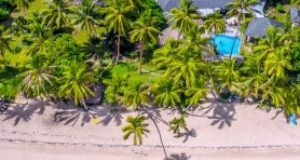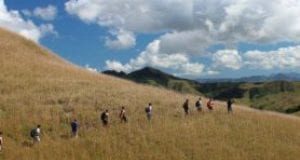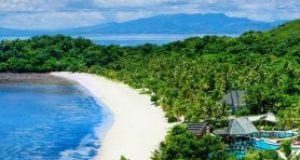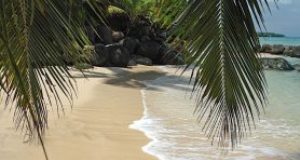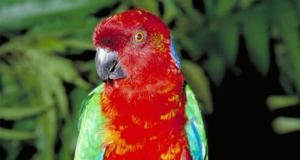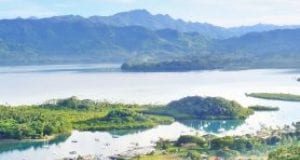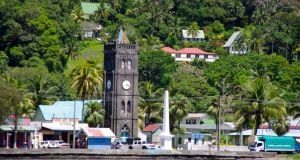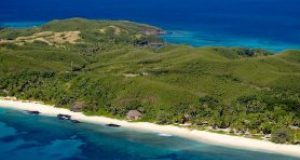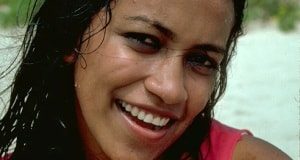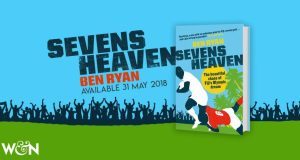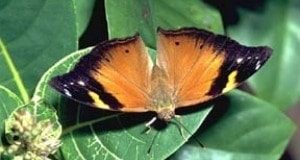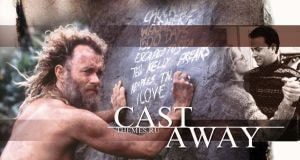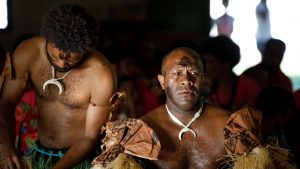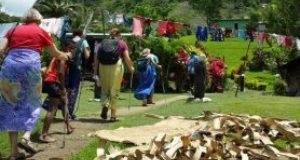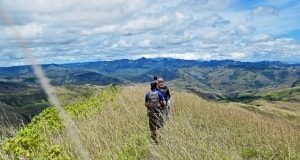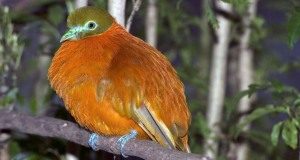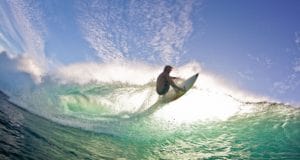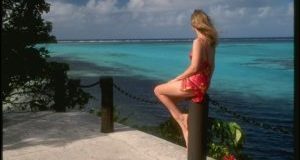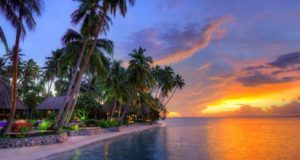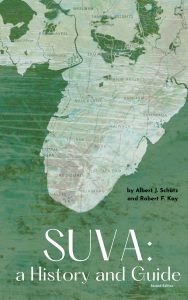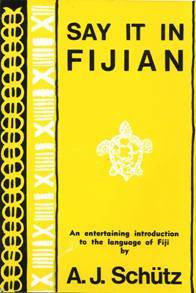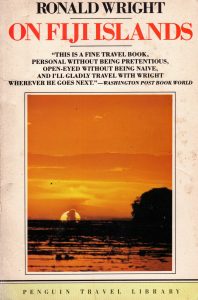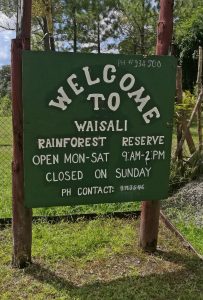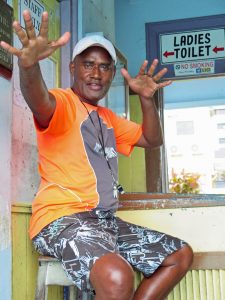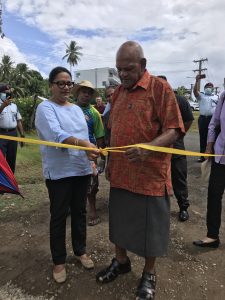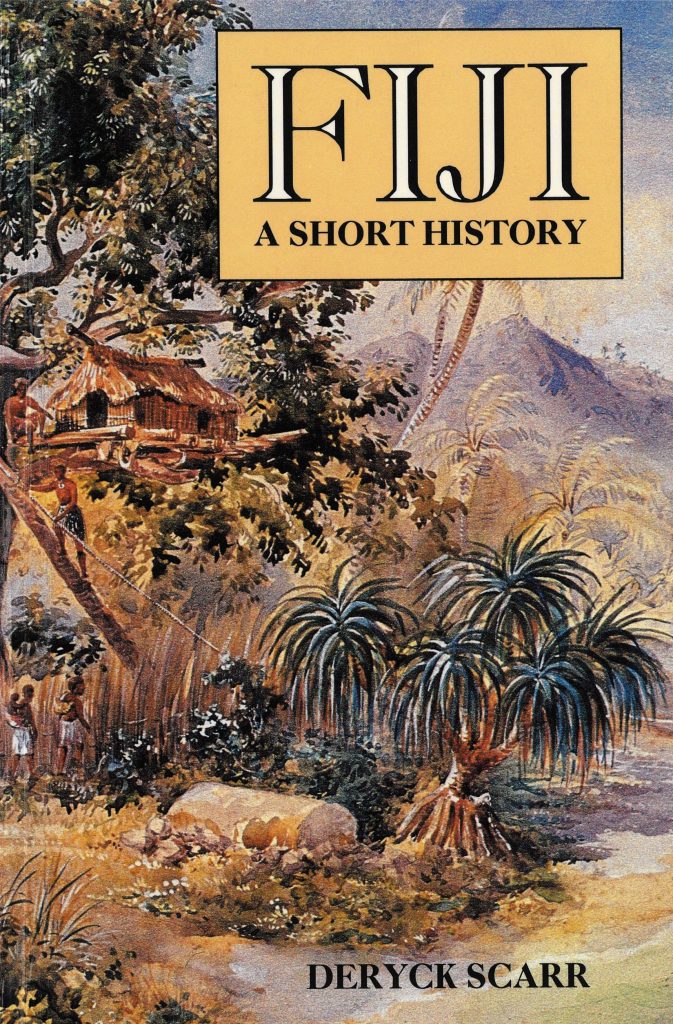Interested in following your passion? Here are some recommendations for nonfiction Fiji books to consider before you pack your suitcase.
Best Selling Non-Fiction Fiji Books
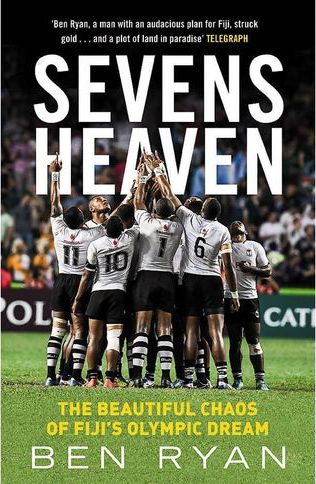
In case you’re not aware, Rugby in Fiji is religion. When Fiji won its first Olympic medal in 2016 in rugby, it was akin to the Moon landing. The story behind this is told eloquently in Sevens Heaven: The Beautiful Chaos of Fiji’s Olympic Dream. As the review in Amazon states, “the journey that will encompass witch doctors and rugby-obsessed prime ministers, sun-smeared dawns and devastating cyclones, intense friendships and bitter rows, phone taps and wild nationwide parties. It will end in Rio with a performance that not only wins Olympic gold but reaches fresh heights for rugby union and makes Ben and his 12 players living legends back home.”
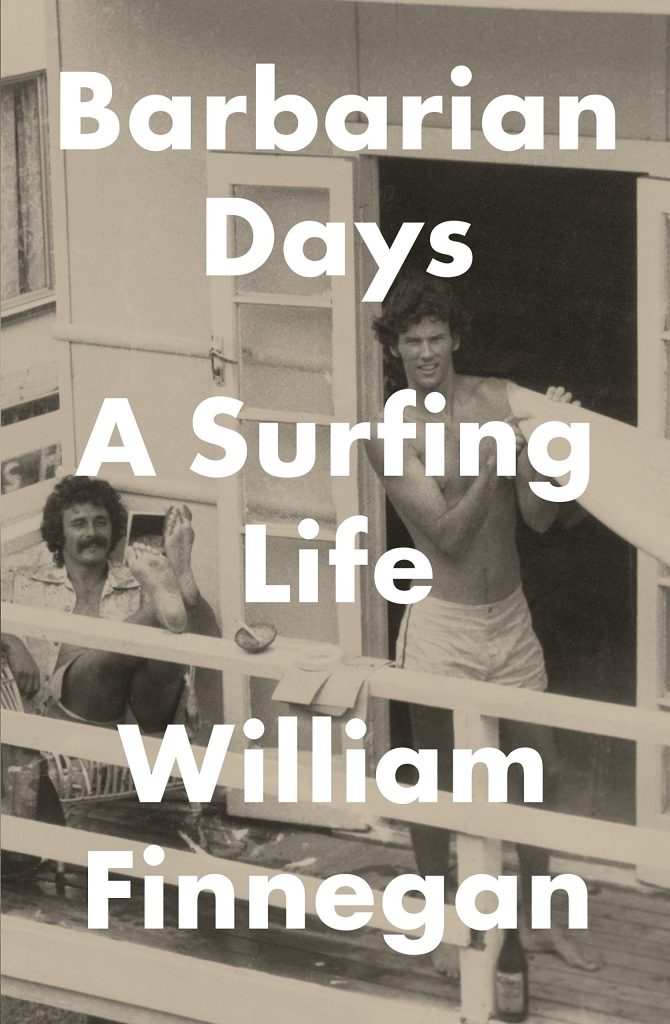
Barbarian Days is not strictly about Fiji but Fiji is definitely part of the portrait painted by Bill Finnegan, who won a Pulitzer Prize for this hefty memoir about his surfing life. Finnegan’s ‘day job’ is with the New Yorker as a globe trotting reporter who specializes in visiting the worlds trouble spots. His sojourn to Fiji is not a political report but is about Fiji’s waves and getting to know the locals.
Here’s part of the Washington Post review: “Terrific…Elegantly written and structured, it’s a riveting adventure story, an intellectual autobiography, and a restless, searching meditation on love, friendship and family…His descriptions of some of the world’s most powerful and unforgiving waves are hauntingly beautiful…Finnegan displays an honesty that is evident throughout the book, parts of which have a searing, unvarnished intensity that reminded me of ‘Stop Time,’ the classic coming-of-age memoir by Frank Conroy.”
Travel
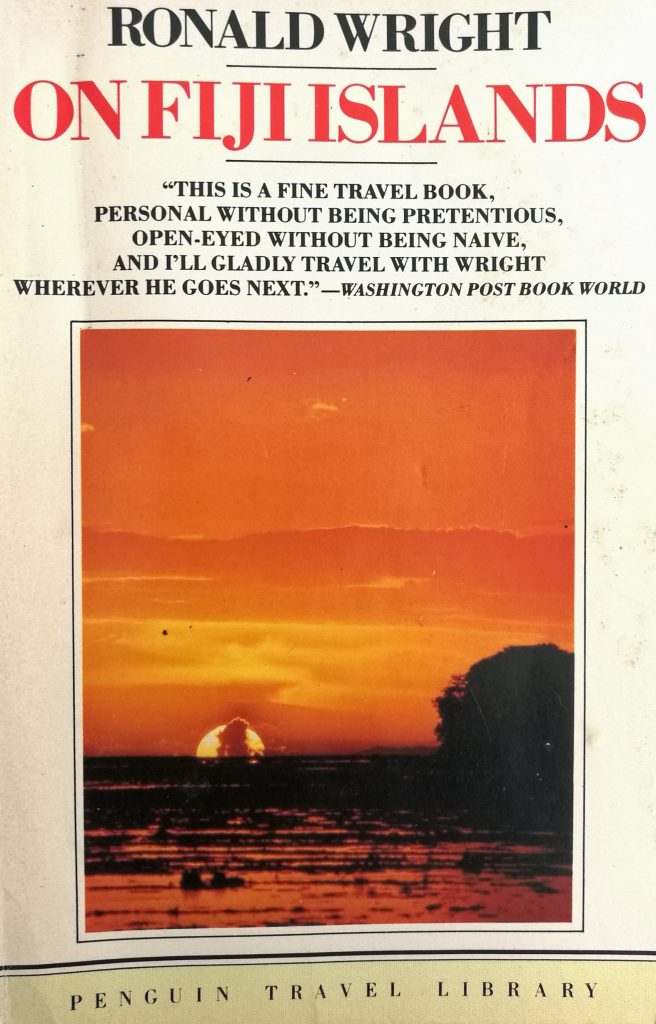
On Fiji Islands (Penguin Books, 1987), by Ronald Wright, captures the spirit of Fiji in a way I’ve not encountered in any other book. Mr Wright, a polished writer with a background in anthropology, does not miss a nuance. His book is a distillation of a sojourn to Fiji which took in everything from the cane fields to the cocktail bars. His real gift is providing insight by weaving a modern chronicle of Fiji in with its history and culture. Wright’s anecdotes, which recreate conversations with Fijians of every stripe, are true to life and often very amusing. If you were to purchase one book as a supplement to this guide, I would recommend this one.
Fiji: Islands of the Dawn by Leonard Wibberly (Ives Washburn, New York, 1964). A wonderfully written account of one man’s experiences in Fiji within a historical context. Wibberly, author of {The Mouse that Roared} and other books, has keen powers of observation and a wit to match.
The Fiji Explorer’s Handbook (Graphics Pacific, Suva, 1985), by Kim Gravelle, is a very fine road guide covering Viti Levu and Ovalau. This is the book to get for the serious driver – it has good maps. (You’ll need to buy this in Fiji.)
Natural History
Birds of the Fiji Bush by Fergus Clunie (Fiji Museum, Suva, 1984) describes birds of Fiji with illustrations by Pauline Morse. It’s the best book on the subject.
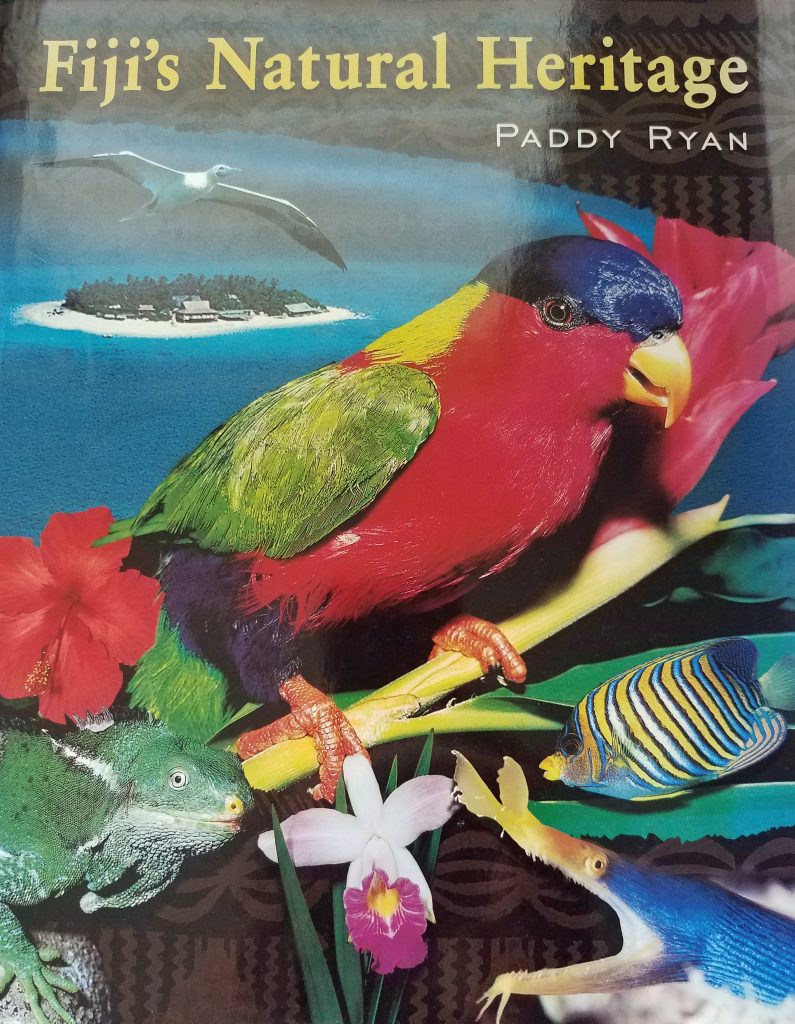
Fiji’s Natural Heritage by Paddy Ryan was the first, and still the most, comprehensive book on Fiji Natural History ever published. Paddy was fortunate enough to spend a great deal of time in Fiji as a child when his father worked there as a meteorologist. He has a special feel for Fiji and there’s no doubt it occupies a special place in his heart. I believe the quality of his work is reflected in his visceral connection to the place. He once told me that the book was “highly recommended by Sir David Attenborough”–an accolade that he justifiably is quite proud of. You don’t get a better endorsement than from Sir David.

(Exile Publishing, 1994) by Paddy Ryan is both a primer for neophytes that covers every conceivable aspect of snorkelling and provides a wonderful introduction to the flora and fauna of the coral reef. It is a valuable resource both for the serious snorkeler or diver who has the intention of ever dipping a toe into Fiji’s warm waters. The Snorkeller’s Guide to the Coral Reef From the Red Sea to the Pacific Ocean
History
Where the Waves Fall by K R Howe (George Allen & Unwin, Sydney, 1984). This book is subtitled `A new South Seas history from first settlement to colonial rule’ and is thus not strictly a work about Fiji. It is a scholarly but very readable tome and one of the best books available on the exploration and settlement of Fiji and its South Pacific neighbors.
Fiji – A Short History – (George Allen & Unwin, Sydney, 1984), by Deryk Scarr, is a very thorough work by a leading Fiji historian. Unfortunately, the writing style is heavy-handed.
Fiji Times – A History of Fiji (The Fiji Times & Herald, Suva, 1979), by Kim Gravelle, is a collection of 50 stories originally published in a newspaper series by the Fiji Times, Fiji’s oldest publication. It is probably the most entertaining historical account available, but its newspaper-like format spotlights only particular areas and thus is limited.
Broken Waves: A History of the Fiji Islands in the Twentieth Century Brij Lal is a Australia-based academic born in Fiji. One reviewer this book a “magisterial history of twentieth-century Fiji.” Lal ties together a disparate wealth of information and scholarship. It’s a good read and one of the few good contemporary works.
Matanitu—The Struggle for Power in Early Fiji (University of the South Pacific, Suva, 1985) by David Routledge is, according to the experts, one of the very best books on Fiji’s history. It’s focused on the years learding up to cession. The title translates as ‘Confederation of States’, a term that incorporates both the old and new systems of government.
The People From the Horizon, An Illustrated History of the Europeans Among the South Seas Islanders was written by Sir Philip Snow (Phaidon, Oxford & McLaren, London, 1979, 1986) once a highly respected civil servant in Fiji’s colonial government from 1938 to 1952. A fluent speaker of Fijian and Fiji Hindi, he has an intimate knowledge of Fiji as well as other islands of the Pacific and has written a number of books. It details the exploration, settlement and development by Europeans in the Pacific. It also discusses the problems that arose regarding the contact between the indigenous and foreign cultures.
Suva – A History & Guide (Pacific Publications, Sydney, 1978), by Albert Schutz, is a very fine booklet (52 pages long), painstakingly researched and well written. Schutz, who is a professor of Polynesian languages at the University of Hawaii, details virtually everything you ever wanted to know about Suva and its environs, including the people behind the street names and the history of every neighbourhood. Although more a historical work than a guidebook, it is a must for the serious Fijiphile. (You’ll need to buy this in Fiji.)
A History of Fiji (Government Press, Suva, 1946), by R A Derrick, is a seminal work on Fijian history written by an educator who was considered an all-time authority on the subject. Available in Fiji if you’re lucky enough to find it.
Language
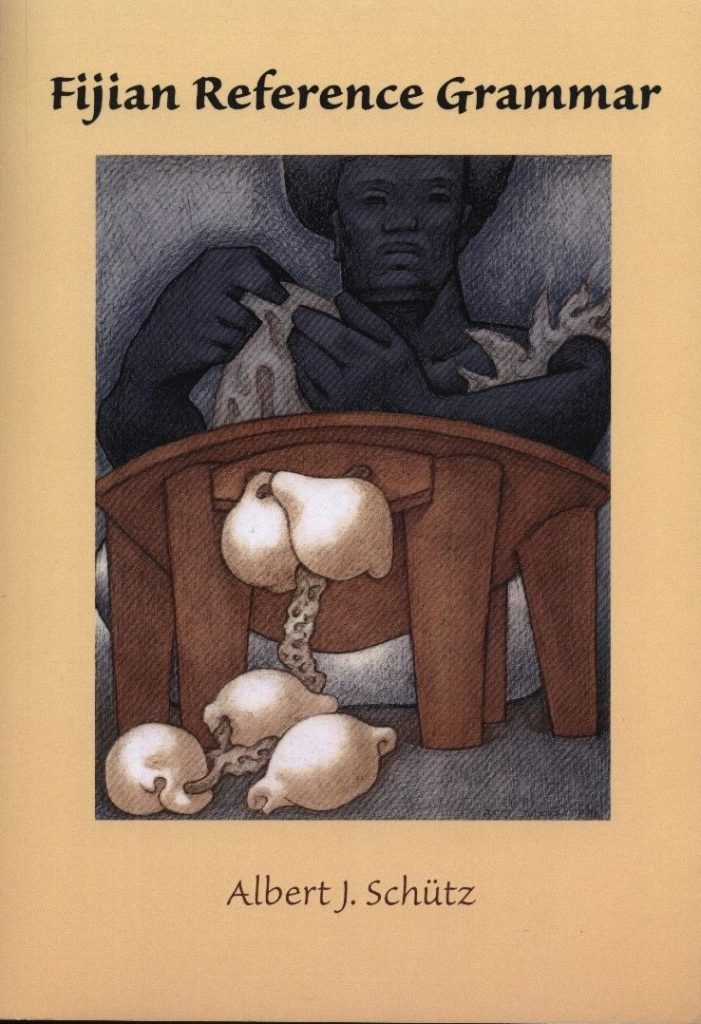
Fijian Reference Grammar by the late Al Schütz had its beginnings at a conference at the University of the South Pacific in Suva in 1971. The sponsorship by the movie and television actor Raymond Burr began with this meeting and lasted through the training period for two Fijians at the University of Hawai‘i at Mānoa and the first few years of actual work at the Fijian Dictionary Project in Suva.
At this conference, the mainly Fijian majority voted for a monolingual dictionary—that is, Fijian words defined in Fijian without an English bridge to understanding. Also, I was chosen to be Director, a position I held until about the end of that decade, when I suggested that Tevita R. Nawadra, the Editor, should take over. The next Director was one of the staff, Paul Geraghty, who had trained in linguistics at Cambridge and Hawai‘i, and had native-speaker command of Fijian, as well as a broad knowledge of many of the other languages/dialects of the area.
In addition to helping with the grammatical organization of the dictionary, I wanted to write a new grammar that would mesh with some of the features of the dictionary. The main reason was that none of the three major twentieth-century works—from 1941, 1956, and 1962—was adequate as a reference grammar. The project office was the ideal place to study Fijian grammar: four native speakers worked there, as well as Geraghty, who had a growing knowledge of local languages in addition to his linguistic training. Among the many benefits of working there was the ease of conferring with the staff or conducting informal tests for language use. For example, one of these asked the question: “How many people are actually included when speakers use the trial (3) pronouns?” (To find the answer, use the index in Fijian Reference Grammar!)
Another advantage was the growing body of file slips showing vocabulary and usage. In addition to transcribing spoken data, the staff combed through printed material—notably from the two Fijian-language newspapers still being published. Obviously the 1941 dictionary (a hastily updated edition of Hazlewood’s 1850 work) was short on borrowed words. The additions found were vital, not only for a dictionary that reflected current usage, but also for an extensive study I did (1978) on the changes involved in adapting an English word to fit Fijian patterns.
The result of my side of this partnership was The Fijian Language, published in 1985—some 700 letter-sized pages printed with dot-matrix type, the state of the art then. After this work became out of print, I revised it, now working with advanced computer and printing techniques. Amazon’s CreateSpace was the vehicle for the print-on-demand end product. So that the book could be kept to a manageable size (500 8 x 10 pages), I deleted from the 1985 edition the historical chapters and the appendix (an annotated reproduction of twenty pre-missionary word lists), which—with some changes and additions—will appear as Discovering Fijian: Early Impressions from Explorers, Traders, and Missionaries. (Six chapters of this work are featured on this website).
The main part of the story begins with the dozen words collected by Cook’s naturalist, William Anderson, in 1777, and ends with David Hazlewood’s Fijian grammar and dictionary in 1850. The account focuses on how the study of the language advanced, especially through the efforts of several Wesleyan missionaries. Their first ground-breaking innovation was David Cargill’s and William Cross’s decision in 1835–36 to simplify the writing of what sounded (to English hearers) like consonant clusters, but were actually unit phonemes. This system, elegant in its simplicity, is still criticized by linguistic amateurs, but lauded by its users and by professional linguists. The study analyzes 20 word lists that were gathered during this period, ranging in size from a dozen to several hundred. Collected mainly by explorers, traders, beachcombers, and roving philologists, these annotated lists are valuable especially for their early examples of “Foreigner Talk”—the language style that Fijians used to communicate with outsiders.Finally, the book discusses Hazlewood’s linguistic contributions, noting that his analysis of vowel length as an essential alphabetic feature predates similar advances elsewhere in the Pacific (especially in Hawai‘i) by nearly a century. This contrast becomes even more dramatic when one compares living conditions in Hawai‘i with those in Fiji, where missionaries were forced to endure family illnesses and deaths, natural disasters, internal warfare, and cannibalism.
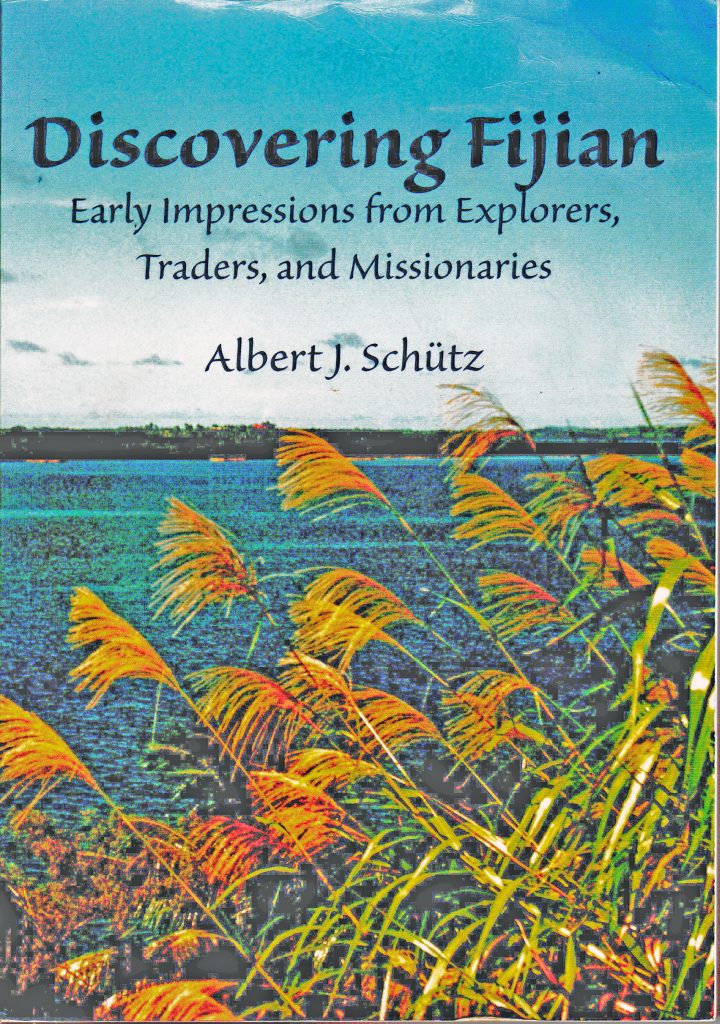
Discovering Fijian: First Impressions from Explorers, Traders, and Missionaries, also by Al Schütz, is based on his more than 50 years of research into the history of how Fijian Languages were recorded and analyzed by the earliest explorers, traders, and missionaries.
The story begins with the dozen words collected by Cook’s naturalist, William Anderson, in 1777, and ends with David Hazlewood’s Fijian grammar and dictionary in 1850. The narrative focuses on how the study of the language advanced, especially through the efforts of several Wesleyan missionaries. Their first ground-breaking innovation was David Cargill’s and William Cross’s decision in 1835–36 to simplify the writing of what sounded (to English hearers) like consonant clusters, but were actually unit phonemes.
This system, elegant in its simplicity, is still criticized by linguistic amateurs, but lauded by its users and by professional linguists. It analyzes 20 word lists that were gathered during this period, ranging in size from a dozen to several hundred. Collected mainly by explorers, traders, beachcombers, and roving philologists, these annotated lists are valuable especially for their early examples of “Foreigner Talk”—the language style that Fijians used to communicate with outsiders.Finally, the book discusses Hazlewood’s linguistic contributions, noting that his analysis of vowel length as an essential alphabetic feature predates similar advances elsewhere in the Pacific (especially in Hawai‘i) by nearly a century.
This contrast becomes even more dramatic when one compares living conditions in Hawai‘i with those in Fiji, where missionaries were forced to endure family illnesses and deaths, natural disasters, internal warfare, and cannibalism.
Fiji nonfiction books on people and society
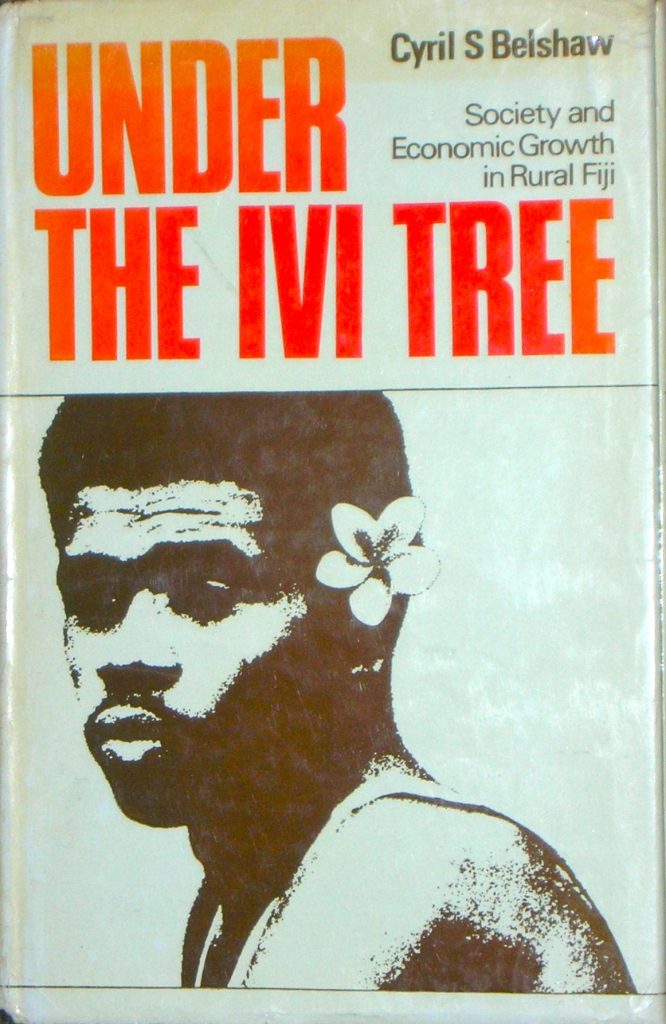
Under the Ivi Tree by Cyril S Belshaw (University of California Press, Berkeley & Los Angeles, 1964; and Routledge & Kegan Paul, London, 1964). An exhaustive socioeconomic study of the Fijian people drawn from the author’s obviously considerable personal experience in the islands.
Kava: The Pacific Elixir : The Definitive Guide to Its Ethnobotany, History, and Chemistry by Vincent Lebot, Mark Merlin, Lamont Lindstrom it was originally published by Yale University Press. This is a complete guide to kava. It summarizes the literature and research of Piper methysticum which is now popular as an anti-stress supplement. The book describes its use in the religious, political, and economic life of the Pacific islands.
Fiji in Literature
Whereas the great Fiji novel has yet to be written, a number of great writers did drop in, namely Rupert Brooke, Jack London, Mark Twain, Rudyard Kipling and Somerset Maugham. However none of their visits resulted in exceptionally good literature. Kipling did write a short poem about the old capital of Levuka and Twain commented on his short stay in Following the Equator in 1897, but these are minuscule compared to the volumes of literature set in other parts of the Pacific. London wrote a short story called ‘The Whale Tooth’ which appeared in his South Sea Tales and was probably based on the killing of Reverend Baker, but it is not one of his best.
Perhaps the best book yet written about Fiji by a major author is Leonard Wibberly’s contemporary account Fiji: Islands of the Dawn (Ives Washburn, New York, 1964). Although out of print, it is worth looking for. The book is a wonderfully written account of one man’s experiences in Fiji within a historical context. That is, the author alternates between chapters dealing with his own encounters and an entertaining history of Fiji. Wibberly, author of The Mouse that Roared and other books, has keen powers of observation and a wit to match. Unfortunately, with the exception of Ron Wright, he seems to be the only writer of stature in modern times to have drifted into Fiji and left us with something in print. The dearth of literature on Fiji makes his book all the more important.
If you are a Michener fan, he wrote an essay on Fijian-Indian relations called ‘Fiji’ which was at best a subjective, if not vituperative blast at Indians. Likewise, his short story ‘The Mynah Birds’ portrayed Indians in an ugly and racist manner. Both pieces appeared in Michener’s Return to Paradise. To his credit, Michener apologized about his untoward remarks years after the publication of the book.




